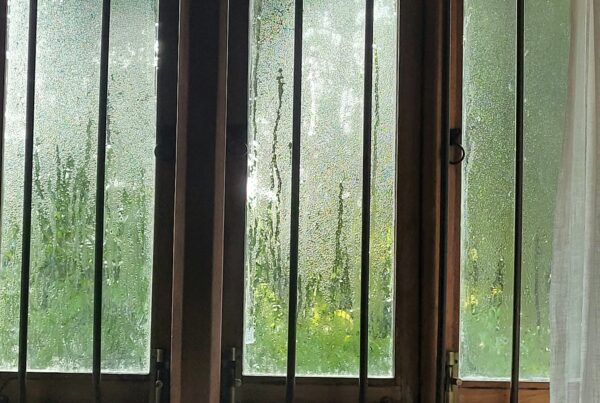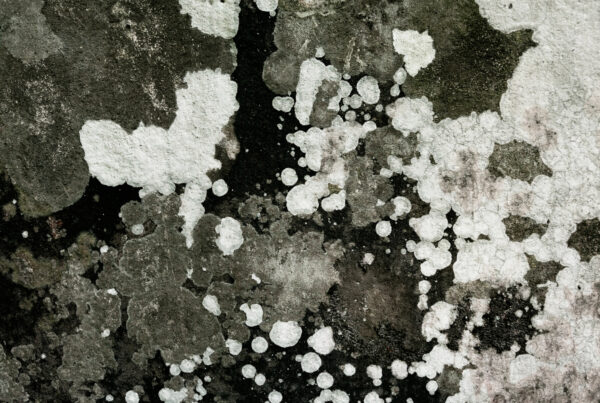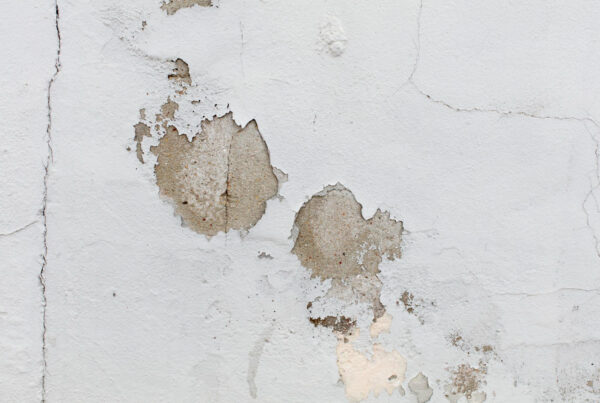The UK’s damp climate can, unfortunately, create conditions for fungi that damage structural timber to thrive. Wet and dry rot affect many British homes yearly, yet some property owners struggle to tell them apart – this is a critical mistake since each requires different treatment approaches.
Misidentification leads to ineffective remedies and costly reinfections. This article will outline the signs of each timber decay type, explore treatment methods that work, understand why correct identification determines treatment success, and recognise when DIY efforts will fail to protect your property’s structural integrity.
What is the Difference Between Wet and Dry Rot?
Wet and dry rot treatment starts with accurate identification, as these two forms of timber decay require different approaches. Both involve wood-destroying fungi consuming cellulose in timber, but their behaviour and treatment needs differ.
Understanding Wet Rot Characteristics
Wet rot fungus, primarily Coniophora puteana (cellar fungus), thrives in timber with a moisture content above 50%. This fungal growth stays confined to damp areas and does not spread beyond the moisture source, making wet rot treatment more straightforward.
Why Dry Rot Is More Challenging
Dry rot fungus, Serpula lacrymans, is a more serious threat. Needing just 20% moisture to germinate, this aggressive fungus spreads through masonry, plaster, and brickwork to attack dry timber elsewhere. Its ability to transport moisture through strand-like structures makes dry rot a destructive timber decay affecting British homes.
Our dry and wet rot treatment solutions help identify and treat both rot types across London properties.
How Can You Identify Wet Rot in Your Property?
Wet rot damage shows specific characteristics that distinguish it from dry rot. Decayed timber appears darkened, usually brown or black, and feels soft and spongy when pressed. As wood dries, it develops linear cracks along the grain rather than across it.
Key wet rot indicators:
- Timber texture – Soft, spongy wood crumbling into fine particles when dry
- Cracking pattern – Linear splits following wood grain, not crossing it
- Colour changes – Dark brown or black discolouration
- Paint condition – Bubbling, flaking, or discoloured paintwork
- Fungal appearance – Thin, sheet-like brown or black growth
- Odour – Damp, musty, earthy smell
- Spread pattern – Damage confined to areas exposed to moisture
Wet rot commonly affects window frames, door frames, skirting boards, and floor timbers where leaks or condensation problems exist. External joinery is especially at risk from weather exposure and poor maintenance.
How Do You Recognise Dry Rot Signs?
Dry rot results in distinctive cuboidal cracking. Timber splits into cube-shaped blocks across the grain, crumbling easily between your fingers even when dry.
Visual Signs of Dry Rot
The most telling sign is white-grey mycelium resembling cotton wool, sometimes with yellow or lilac patches. Fine silvery strands (hyphae) spread across timber and masonry surfaces, penetrating brick walls and travelling several metres from the original infection.
Advanced Dry Rot Indicators
Advanced dry rot produces fruiting bodies (sporophores) – large, pancake-shaped growths with rusty red centres and white edges. These release millions of spores, creating rust-coloured dust throughout affected rooms. A distinctive mushroom smell accompanies active outbreaks.
Dry rot warning signs:
- Cuboidal cracking – Deep splits creating cube-shaped timber blocks
- Mycelium growth – Cotton wool-like white or grey fungal strands
- Fruiting bodies – Large reddish-brown pancake structures
- Spore dust – Fine rust-red powder covering surfaces
- Wood condition – Dry, brittle timber that crumbles easily
- Spread evidence – Damage extending beyond damp areas
What Causes Timber Decay in UK Properties?
Understanding moisture sources can help prevent future rot problems. Common causes include roof leaks, penetrating damp through porous brickwork, failed damp proof courses, blocked gutters, plumbing leaks, and poor ventilation, which create condensation.
Challenges in Older Properties
Older properties face specific challenges: solid wall construction lacking cavity insulation, original timber contacting damp masonry, and deteriorated Victorian-era damp proof courses create opportunities for moisture ingress.
Modern Building Issues
Modern buildings are also not immune – poor workmanship, inadequate ventilation design, and bridged damp proof membranes trigger timber decay. Blocked air bricks prevent sub-floor ventilation and create rot conditions. Bathrooms and kitchens without extraction fans accumulate moisture that penetrates timber nearby.
How Do Professionals Like Refresh Treat Wet Rot?
Professional wet rot treatment starts by eliminating moisture sources – without this, repairs will fail. Specialists like us cut out affected timber, extending removal beyond visible damage to ensure complete eradication.
Treatment areas must dry thoroughly before applying professional-grade fungicide to the surrounding timber. This dual-purpose treatment kills fungal spores and protects against future infection. New pressure-treated timber replaces removed sections, carefully isolated from moisture sources.
Professional wet rot treatment process:
- Moisture source identification – Survey locates all water ingress points.
- Damaged timber removal – Cutting out rotted wood sections.
- Drying phase – Complete moisture elimination.
- Fungicide application – Professional treatment of sound timber.
- Timber replacement – Installing pre-treated wood with proper isolation.
- Preventive measures – Improved ventilation and moisture barriers.
What Does Professional Dry Rot Treatment Involve?
Dry rot treatment requires an aggressive approach due to the fungus’s ability to spread through building fabric. This specialised work requires professional expertise – DIY attempts risk incomplete removal and costly re-infection.
Initial Treatment Phase
Specialists remove infected timber plus a safety margin of one metre beyond visible fungal growth. All plaster gets stripped to bare masonry, exposing hidden mycelium strands. Brickwork receives intensive fungicidal treatment through deep injection holes.
Sterilisation and Prevention
Masonry sterilisation uses high-strength biocides formulated for dry rot eradication. Treatment extends beyond visible infection zones as mycelium strands lie dormant within walls. Replacement timber comes pre-treated and isolated from masonry using physical barriers.
Installing suitable sub-floor ventilation, improving airflow, and eliminating moisture sources all help to prevent re-infection.
Why Choose Professional Treatment Over DIY Methods?
Professional wet and dry rot treatment offers complete eradication through systematic approaches. DIY attempts may miss hidden infection, fail to address underlying causes, or use inadequate products, leading to expensive re-infection.
Professional Equipment and Expertise
Certified specialists like Refresh use moisture detection equipment to identify problems invisible to untrained eyes. We understand building construction and accurately assess rot spread through structural timbers. Professional-grade fungicides are not available to general consumers.
Insurance and Guarantee Benefits
Insurance and mortgage implications also make professional treatment important. Suitable certification protects a property’s values and satisfies lender requirements. Insurance-backed guarantees from established companies like Refresh Property Services and Consultants provide long-term peace of mind.
With over 30 years of refining timber preservation services, we exceed customer expectations through comprehensive surveys showing exactly what’s wrong, how we’ll fix it, and transparent costs. As Newton Waterproofing Registered Installers and Trustmark Endorsed specialists, we provide GPI insurance-backed guarantees on all timber treatments.
Get Expert Wet and Dry Rot Treatment from Trusted Specialists
Refresh brings three decades of experience treating wet and dry rot throughout London properties. Our comprehensive approach combines accurate diagnosis, complete fungal eradication, and long-term prevention strategies that help protect your investment.
As registered installers for Safeguard, Delta, and Wykamol treatment systems, with full Checkatrade membership and GPI insurance-backed guarantees, Refresh PSC delivers lasting solutions. Contact our team today for a professional wet and dry rot treatment consultation.



